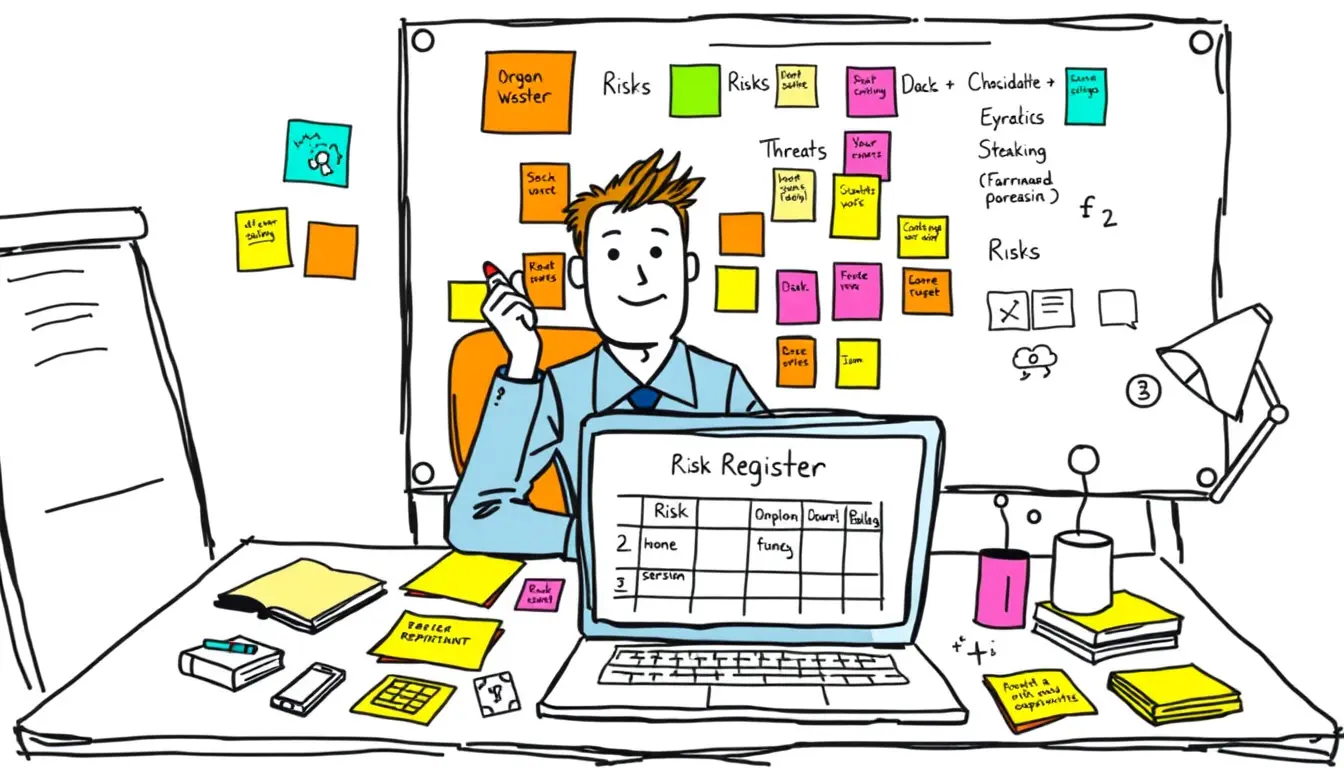The Importance of Risk Management in Business
Risk management is a fundamental aspect of running a successful business. It involves identifying, assessing, and mitigating potential threats and opportunities that could impact the organization. By proactively managing risks, businesses can minimize potential damage and seize opportunities for growth and innovation.
One of the key reasons why risk management is important in business is that it allows companies to anticipate and prepare for potential challenges. This is particularly crucial in today’s rapidly changing and unpredictable business environment. By having a comprehensive understanding of potential risks, businesses can develop strategies to mitigate them, ensuring the continuity of operations and protecting their reputation. Moreover, effective risk management can also lead to competitive advantages, as companies that are adept at managing risks are more likely to identify and exploit new opportunities in the market. Ultimately, implementing robust risk management practices is essential for businesses to thrive and succeed.
Identifying and Assessing Potential Threats and Opportunities
Identifying and assessing potential threats and opportunities is crucial for businesses to ensure their long-term success. This process involves a systematic examination of both internal and external factors that may impact the organization’s operations, goals, and objectives.
Internally, businesses need to conduct a thorough analysis of their strengths, weaknesses, and core competencies. This self-assessment enables them to identify areas of improvement and potential risks that may hinder their progress. Additionally, businesses must monitor market trends and stay updated on industry developments to understand how external factors such as economic conditions, regulatory changes, and technological advancements might impact their operations.
By systematically identifying potential threats and opportunities, businesses can proactively develop strategies to mitigate risks and exploit favorable conditions. This enables them to stay ahead of the competition, adjust their business plans accordingly, and make informed decisions that align with their overall objectives. Understanding the landscape in which they operate allows businesses to anticipate challenges, capitalize on emerging trends, and ultimately achieve sustainable growth.
Understanding the Purpose and Benefits of Risk Registers
Risk registers play a vital role in helping businesses to identify, assess, and manage potential threats and opportunities. These registers serve as a centralized database, documenting all known risks and their associated details. By having a comprehensive list of risks, businesses can gain a clear understanding of the potential impact and likelihood of each risk occurring, enabling them to prioritize and allocate resources effectively.
One of the primary purposes of a risk register is to enhance the decision-making process within an organization. By systematically capturing and analyzing risks, businesses can make informed choices about how to mitigate the negative impacts of risks and exploit any potential opportunities that may arise. Additionally, risk registers provide transparency and accountability, allowing stakeholders to understand the risks involved in various business activities. This transparency fosters a proactive risk management culture, where risks are continuously monitored and addressed, ultimately leading to increased resilience and better business outcomes.
Key Components of an Effective Risk Register
A risk register serves as a vital tool for businesses to manage and track risks effectively. It provides a comprehensive overview of potential threats and opportunities that may impact the organization. To ensure the effectiveness of a risk register, certain key components should be included.
Firstly, a clear and concise risk description is essential. This should outline the nature of the risk, including relevant details such as its source, potential impact, and likelihood of occurrence. Furthermore, it is crucial to identify the stakeholders affected by each risk, as this helps in determining the level of importance and priority for mitigation efforts. Additionally, including risk owners who are accountable for managing and monitoring the risks can help to ensure that appropriate actions are taken in a timely manner. These key components form the foundation of an effective risk register, providing a comprehensive understanding of the risks faced by the business.
Establishing Clear Risk Criteria and Classification
One crucial aspect of effective risk management is establishing clear risk criteria and classification within an organization. By clearly defining the criteria used to assess and categorize risks, businesses can ensure consistency and clarity in their risk management practices.
The first step in establishing clear risk criteria is determining the factors that will be considered when evaluating risks. These factors may include the potential impact on the organization, the likelihood of occurrence, and the timeframe within which the risk may materialize. By identifying and defining these key factors, businesses can create a standardized approach to risk assessment and classification. This, in turn, allows for a more objective and consistent evaluation of risks across different departments and projects. Additionally, clear risk criteria enable businesses to prioritize risks based on their level of significance, ensuring that resources are allocated appropriately to address the most critical threats and opportunities.
Implementing a Robust Risk Tracking Process
Implementing a robust risk tracking process is an essential aspect of effective risk management in business. By having a well-defined system in place, organizations can proactively identify, monitor, and manage potential risks and opportunities that may impact their operations. The key to a successful risk tracking process lies in its ability to capture and track relevant data, enabling businesses to make informed decisions and take necessary actions in a timely manner.
The first step in implementing a robust risk tracking process is to establish clear guidelines and procedures for identifying and documenting risks. This includes defining the criteria for risk classification and ensuring that all stakeholders understand and adhere to these guidelines. Additionally, it is crucial to determine the appropriate level of detail required for tracking risks, as too much information can be overwhelming, while too little may lead to oversight. Once the guidelines are in place, organizations can then leverage technology and software solutions to create a centralized repository for storing and managing risk-related data. This enables real-time tracking, analysis, and reporting, enabling businesses to stay updated on the status of identified risks and take necessary actions promptly.• Clearly define guidelines and procedures for identifying and documenting risks• Establish criteria for risk classification and ensure stakeholders understand and adhere to them• Determine the appropriate level of detail required for tracking risks• Leverage technology and software solutions to create a centralized repository for storing and managing risk-related data• Enable real-time tracking, analysis, and reporting of identified risks • Stay updated on the status of identified risks • Take necessary actions promptly based on the information gathered
Best Practices for Maintaining and Updating Risk Registers
Proper maintenance and regular updates of risk registers are essential for ensuring their effectiveness in risk management. To achieve this, it is crucial to establish a designated person or a team responsible for the regular review of the risk register. This person or team should have a clear understanding of the objectives and goals of the organization and possess the necessary knowledge and expertise in risk management.
One of the best practices for maintaining and updating risk registers is to conduct regular risk assessments. This involves identifying any new risks that may have emerged, as well as reevaluating the existing risks to determine if their likelihood or impact has changed. By conducting regular risk assessments, organizations can stay ahead of potential threats and opportunities, allowing them to make informed decisions and take appropriate actions to mitigate risks or exploit opportunities. It also ensures that the risk register remains relevant and up-to-date, reflecting the current state of the business environment.
Analyzing and Prioritizing Risks in Relation to Business Objectives
Analyzing and prioritizing risks in relation to business objectives is a critical step in effective risk management. By thoroughly examining potential risks and their potential impact on business goals, organizations can identify areas of vulnerability and develop appropriate mitigation strategies. This analysis involves assessing the likelihood of each risk occurring and the potential severity of its impact, enabling businesses to prioritize their efforts and allocate resources where they are most needed.
One key aspect of analyzing and prioritizing risks is to align them with the organization’s overall objectives. By understanding how each risk may affect specific business goals, decision-makers can make informed choices about which risks to address first. For example, if the primary objective is to increase market share, risks related to market competition or changing consumer preferences may take precedence. On the other hand, if the objective is to improve operational efficiency, risks associated with supply chain disruptions or technology failures may require immediate attention. This strategic approach ensures that resources are allocated effectively and that risk management efforts are aligned with the organization’s broader vision.
Mitigating Risks and Exploiting Opportunities through Effective Planning
One crucial aspect of effective risk management is the process of mitigating risks and exploiting opportunities through thorough planning. By carefully analyzing the risks identified in the risk register, businesses can develop strategies to minimize the potential negative impacts on their operations. This planning may involve implementing contingency plans, creating action steps to address specific risks, or assigning responsibilities to ensure timely and effective response to any potential issues.
Furthermore, effective planning also allows businesses to capitalize on opportunities that may arise. By identifying the potential positive outcomes or advantages highlighted in the risk register, organizations can develop proactive strategies to exploit these opportunities. This may involve reallocating resources, adjusting business strategies, or capitalizing on emerging market trends. By incorporating these opportunities into their planning process, businesses can position themselves to maximize growth and success.
Continuous Improvement and Learning from Risk Register Data
To ensure the success and sustainability of a business, continuous improvement is imperative. Learning from risk register data plays a crucial role in this process. By analyzing the data accumulated in the risk register, organizations can gain valuable insights into potential threats and opportunities that may arise in the future.
One key aspect of continuous improvement is the ability to identify patterns and trends in the risk register data. By analyzing the frequency and severity of risks, organizations can develop strategies to mitigate potential threats more effectively. This proactive approach allows companies to stay ahead of any potential problems and make informed decisions that enhance their risk management practices.
In addition to risk mitigation, learning from risk register data also enables organizations to identify opportunities for growth and innovation. By assessing the impact and likelihood of potential opportunities, businesses can develop strategies to exploit them and drive positive change. This proactive attitude towards risk management can open doors to new markets, improve operational efficiency, and ultimately contribute to the long-term success of the company. By continuously learning from risk register data, organizations can adapt their strategies and make informed decisions that lead to continuous improvement and growth.
What is the purpose of risk management in business?
The purpose of risk management in business is to identify and assess potential threats and opportunities that may affect the achievement of business objectives.
What is a risk register?
A risk register is a document or database that captures and tracks potential risks and opportunities, providing a comprehensive view of the risks faced by an organization.
What are the key components of an effective risk register?
The key components of an effective risk register include a clear identification of risks, assessment of their likelihood and impact, assigned ownership, planned responses, and ongoing monitoring and review.
How do you establish clear risk criteria and classification?
Clear risk criteria and classification can be established by defining specific thresholds for likelihood and impact, as well as using a consistent framework to categorize risks based on their nature and potential consequences.
How can a robust risk tracking process be implemented?
A robust risk tracking process can be implemented by regularly updating the risk register, documenting changes in risk status, and ensuring that relevant stakeholders are engaged in the process.
What are the best practices for maintaining and updating risk registers?
Best practices for maintaining and updating risk registers include regular reviews, capturing new risks and changes to existing risks, ensuring accurate and up-to-date information, and actively involving key stakeholders.
How do you analyze and prioritize risks in relation to business objectives?
Risks can be analyzed and prioritized by considering their potential impact on business objectives, the likelihood of occurrence, and the organization’s risk appetite.
How can risks be mitigated and opportunities exploited through effective planning?
Risks can be mitigated and opportunities exploited through effective planning by developing and implementing appropriate risk response strategies, such as risk avoidance, mitigation, transfer, or acceptance.
How can continuous improvement and learning be derived from risk register data?
Continuous improvement and learning can be derived from risk register data by analyzing trends and patterns, identifying areas for improvement, and incorporating lessons learned into future risk management practices.














Leave a Reply